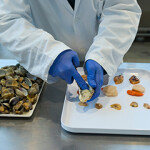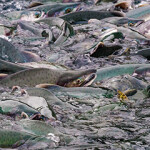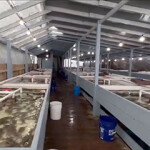Scotland unveils new seafood strategy

New national measures aimed at boosting Scotland’s seafood economy have been set out by the Scottish government in its newly published strategy for the country’s seafood sector.
The “Strategy for Seafood” outlines how the fishing and aquaculture sectors are being supported, and showcases ongoing work to monitor and manage the marine space to give consumers’ greater confidence in the sustainability of the country’s fishery products.
Scotland Rural Affairs Secretary Mairi Gougeon said the strategy’s publication shows the extent of the government’s commitment to the sector, which employs almost 15,000 people across the country.
“With increasing competition and pressure on our seas and coasts, it is important to recognize the value that our world-renowned seafood sector brings to the Scottish economy. In 2021, fish and seafood exports were valued at GBP 1 billion [USD 1.11 billion, EUR 1.14 billion], which is 60 percent of total Scottish food exports,” she said.
Additionally, as a key part of its fisheries management strategy, the document detailed changes being introduced to license conditions for Scottish fishing vessels to facilitate increased landings into Scotland, with the secondary goal of benefitting onshore industries such as processors and haulage companies.
“Each year, Scottish vessels land around GBP 100 million [USD 112 million, EUR 114 million] worth of fish outside of Scotland, often for species for which we have ready processing capacity. These changes are an important step in ensuring the people of Scotland benefit first and foremost from our fantastic natural assets and resources,” Gougeon said.
The new report has been met with industry approval, with trade body Seafood Scotland among those supporting its publication, which outlines action areas that will enable the industry to better compete globally and contribute more towards the circular economy, according to Seafood Scotland CEO Donna Fordyce.
“There are of course obstacles to overcome, but we now have a deeper appreciation of the priorities for our industry and Seafood Scotland’s contribution to Scotland’s future prosperity, particularly our coastal communities,” Fordyce said. “We particularly welcome the focus on the importance of sourcing Scottish data from U.K.-wide figures, as it will help us better understand trade flows – and barriers – across the U.K. and overseas, and ensure we are better-placed to target our efforts where they are most effective.”
Salmon Scotland CEO Tavish Scott said the strategy also shows the economic contribution of farm-raised salmon to the country’s “world-class seafood offering.”
Farm-raised salmon is the United Kingdom’s top food export, and the sector has a target of achieving net zero emissions by 2045 as part of its sustainability charter, Scott said.
“The U.N. has pointed out that seafood and sustainable aquaculture is the way forward, and there is a real opportunity through the growth of the Scottish salmon sector,” Scott said.
Photo courtesy of Steve Allen/Shutterstock






Share